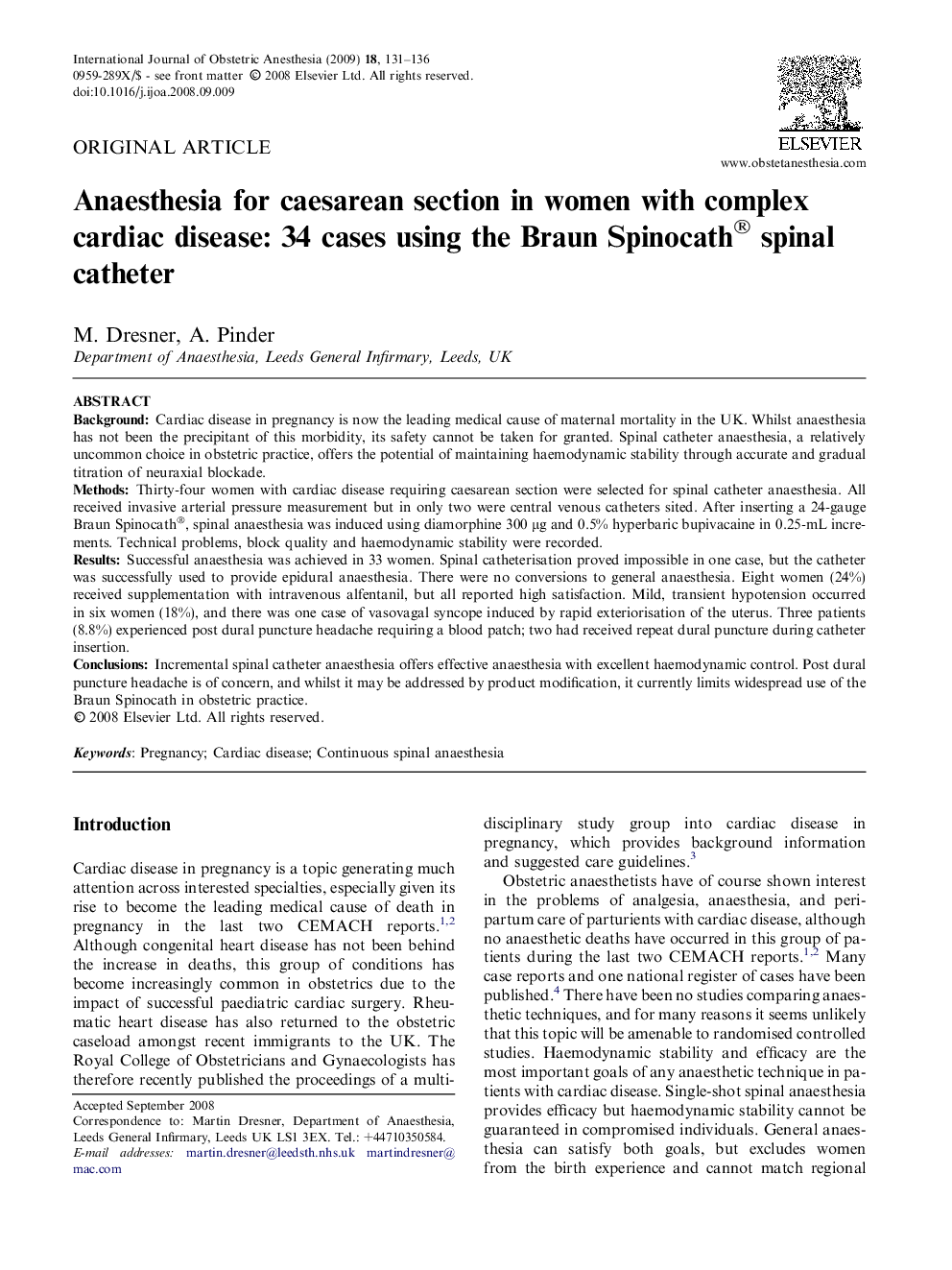| Article ID | Journal | Published Year | Pages | File Type |
|---|---|---|---|---|
| 2758524 | International Journal of Obstetric Anesthesia | 2009 | 6 Pages |
BackgroundCardiac disease in pregnancy is now the leading medical cause of maternal mortality in the UK. Whilst anaesthesia has not been the precipitant of this morbidity, its safety cannot be taken for granted. Spinal catheter anaesthesia, a relatively uncommon choice in obstetric practice, offers the potential of maintaining haemodynamic stability through accurate and gradual titration of neuraxial blockade.MethodsThirty-four women with cardiac disease requiring caesarean section were selected for spinal catheter anaesthesia. All received invasive arterial pressure measurement but in only two were central venous catheters sited. After inserting a 24-gauge Braun Spinocath®, spinal anaesthesia was induced using diamorphine 300 μg and 0.5% hyperbaric bupivacaine in 0.25-mL increments. Technical problems, block quality and haemodynamic stability were recorded.ResultsSuccessful anaesthesia was achieved in 33 women. Spinal catheterisation proved impossible in one case, but the catheter was successfully used to provide epidural anaesthesia. There were no conversions to general anaesthesia. Eight women (24%) received supplementation with intravenous alfentanil, but all reported high satisfaction. Mild, transient hypotension occurred in six women (18%), and there was one case of vasovagal syncope induced by rapid exteriorisation of the uterus. Three patients (8.8%) experienced post dural puncture headache requiring a blood patch; two had received repeat dural puncture during catheter insertion.ConclusionsIncremental spinal catheter anaesthesia offers effective anaesthesia with excellent haemodynamic control. Post dural puncture headache is of concern, and whilst it may be addressed by product modification, it currently limits widespread use of the Braun Spinocath in obstetric practice.
